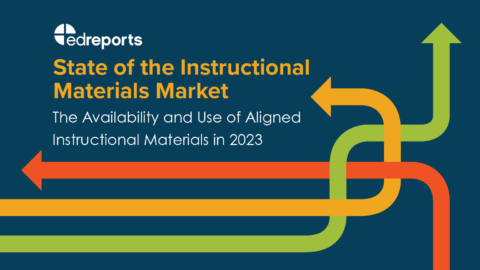EdReports: A Key Tool in a Comprehensive Curriculum Strategy
Why states must pair independent reviews with a holistic approach to curriculum adoption that centers teachers in decision-making and prioritizes local needs.
Related Resources
article
State of the Instructional Materials Market 2023
Explore our latest study revealing that while quality K-12 curriculum availability in ELA, math, and science has grown, classroom usage still lags behind.
case-study
Building Buy-In: Rhode Island’s Comprehensive Approach to Selecting High-Quality Curricula
Dive into EdReports’ expansive case study of Rhode Island profiling nearly four years of transformational work to overhaul its curriculum selection practices and evolve the culture around instructional materials.
article
Selecting Great Materials is Not Enough
Chief Strategy Officer, Lauren Weisskirk, shares a tale of two adoptions: one that planned a rollout for its new instructional materials and one that didn't.


